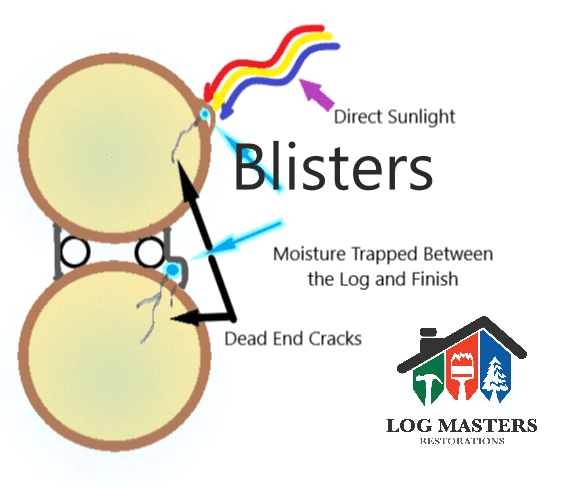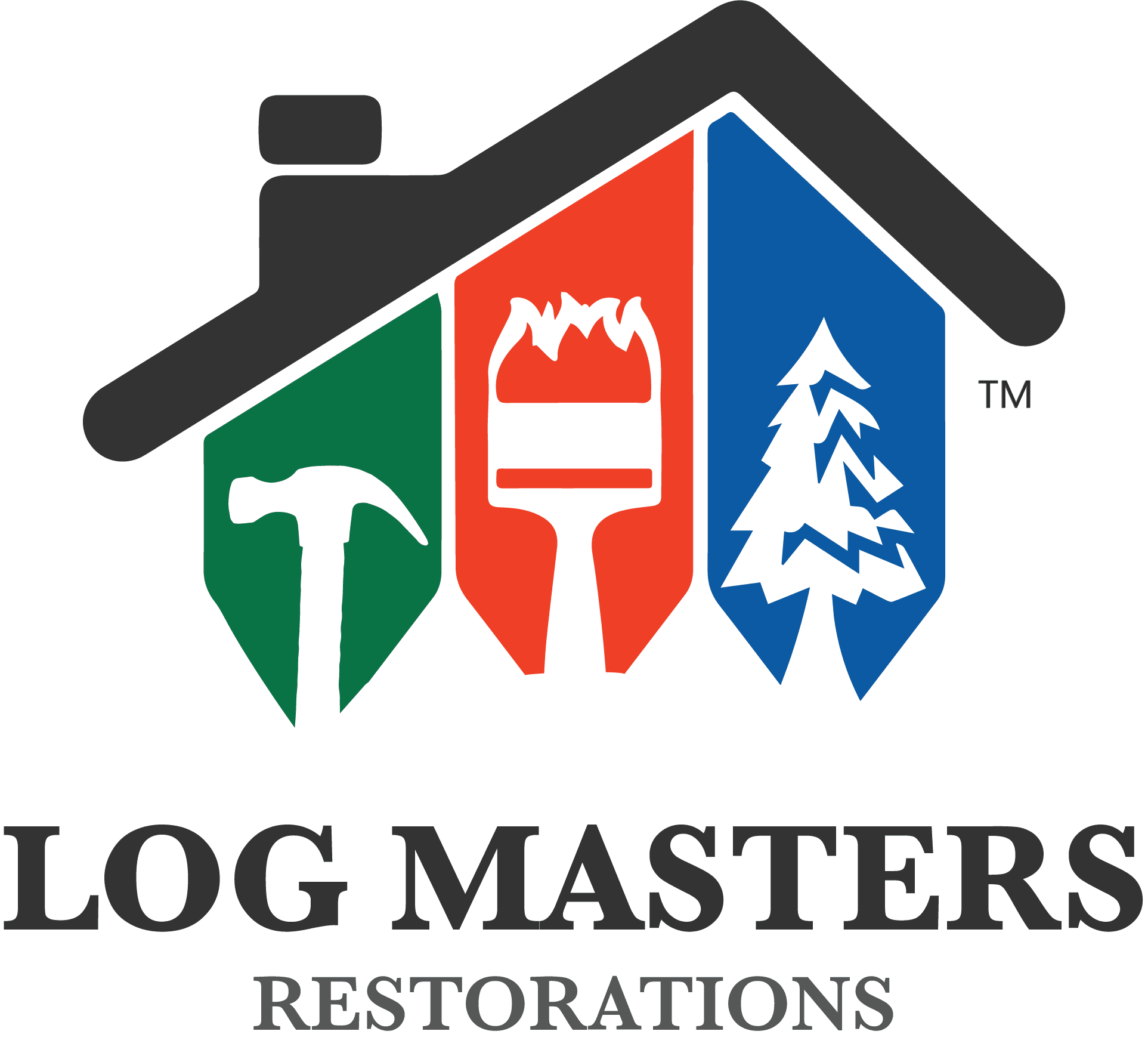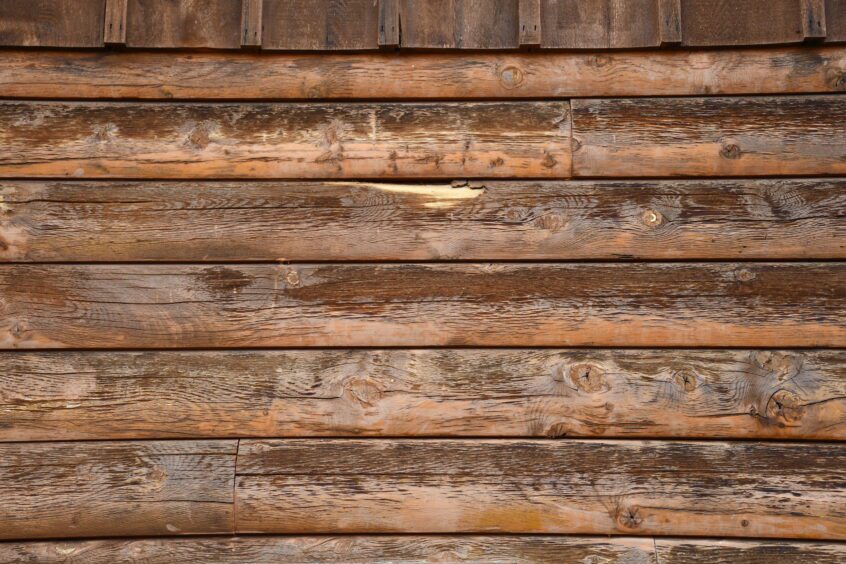Why? You should know your regions Equilibrium Moisture Content (EMC) because humidity levels vary from region to region. Learn your regions EMC here. For instance, yearly, the EMC for Florida ranges from a low of 12 to 13 as a high. Conversely, Colorado ranges from 5-7. It is essential to know your log home’s EMC if the logs were green when built.
EMC Equation & Equilibrium

When wood is below the fiber saturation point, it’s moisture content is affected by both temperature and relative humidity. The equation for the moisture content (M) of wood is defined as M = (m – mod) / mod, where m is the mass of the wood (including moisture) and mod is the oven-dry mass of the wood.
Over time, wood reaches a state of balance known as equilibrium, where opposing forces like dryness and moisture level out. When wood is exposed to a particular temperature and humidity level, it absorbs or releases moisture from the environment. This process continues until the wood achieves a state of balance with its surroundings. Once in equilibrium, the moisture content of the wood remains constant and does not change much over time. The wood’s moisture content corresponding to a particular temperature and humidity level is known as the Equilibrium Moisture Content (EMC).

Click the image of the EMC table of U.S. Dept. Of Agriculture to be directed to their site to discover your regions information.
Aside from making logs more susceptible to rot, the higher the equilibrium moisture content (EMC) in a log, the more it swells with water, increasing in size and weight. This can cause shifting and uneven settling of your cabin. Conversely, the lower the EMC, the more the log shrinks, losing moisture, becoming lighter, and settling in size. Learn more about settling here.
Why does this matter?
As previously mentioned, they will not change much once logs reach equilibrium. Ideally, it is important to maintain logs at a moisture content of 6%-19% EMC in order to prevent deterioration. However, if the equilibrium in your region is 36%, it is crucial to keep the logs at a low EMC level, as the natural state of equilibrium will try to expand your logs and encourage rot growth.
Using the best quality stains can help protect your logs from the effects of the natural equilibrium in your region and save you loads of money on restorations and maintenance. If your logs’ moisture content exceeds 25%, there are few successful ways to dry them out. One is to dry them out with weep holes, or in a kiln or wait for repeat seasons of arid weather to reduce the equilibrium. I would not count on them to solve moisture-saturated logs. This is why it is so important to properly maintain your log cabin regularly versus when it turns gray.
Moisture Content Meters Makes EMC Discovery Easy!
If you’re unsure, there is a solution. Moisture content meters are a quick find at a hardware store. You can purchase the Moisture Meter, which you can pick up online from $45-$700, to discover the current EMC of your logs without the hassle of equations. Please make sure you check each side of your log home. This is due to the south wall receiving the most sunlight while the north sees less. The north wall might have a higher level as it often stays wet the longest.
High Moisture Levels Issues

If the moisture level is, or is above 20%, as the logs dry out, the moisture will move from the center outward, causing the water content to rise to the surface of the log (see the picture, for example). If the finish (oil or water-based) is applied to a high EMC log, it can trap moisture between the log and the finish.
Why is this important for you to know as a log homeowner? So you can avoid common issues that plague cabin owners. High EMC causes problems with finish adhesion, generally appearing as blisters, cracks, and peeling. In this case, we recommend a penetrating finish that will allow moisture to escape.
I hope reading this will help educate log homeowners on the importance of knowing their region’s EMC and why picking the best quality stain will save them money and stress.

